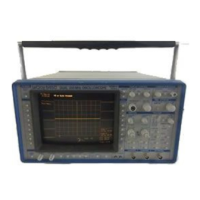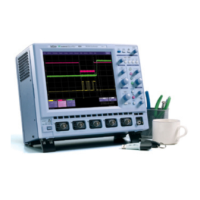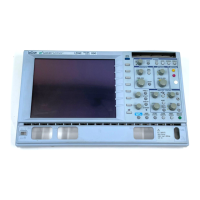GPIB Operation 3
Parallel Poll Parallel polling is only an advantage if there are several instru-
ments that may need attention.
In parallel polling, the controller simultaneously reads the Individ-
ual STatus bit (IST) of all the instruments to determine which one
needs service. Since parallel polling allows up to eight different
instruments to be polled at the same time, parallel polling is the
fastest way to identify state changes of instruments supporting this
capability.
When a parallel poll is initiated, each instrument returns a status
bit via one of the DIO data lines. Devices may respond either indi-
vidually using a separate DIO line or collectively on a single data
line. Data line assignments are made by the controller via a Paral-
lel Poll Configure (PPC) sequence.
In the following example, the command "INE 1" enables the
event "new signal acquired" in the INR to be reported to the INB
bit of the status byte STB. The PaRallel poll Enable register (PRE)
determines which events will be summarized in the IST status bit.
The command "*PRE 1" enables the INB bit to set the IST bit
whenever it is set. Once parallel polling has been established, the
parallel poll status is examined until a change on data bus line
DI02 takes place.
Stage 1: Enable the INE and PRE registers, configure the con-
troller for parallel poll and instruct the oscilloscope to respond
on data line 2 (DI02)
CMDI$="?_@$"
CALL IBCMD(BRD0%,CMDI$)
CMD$="INE 1;*PRE 1"
CALL IBWRT(BRD0%,CMD$)
CMD4 $=CHR$ (&HS)+CHR$ (&H69)
CALL IBCMD(BRD0%,CMD4$)
23

